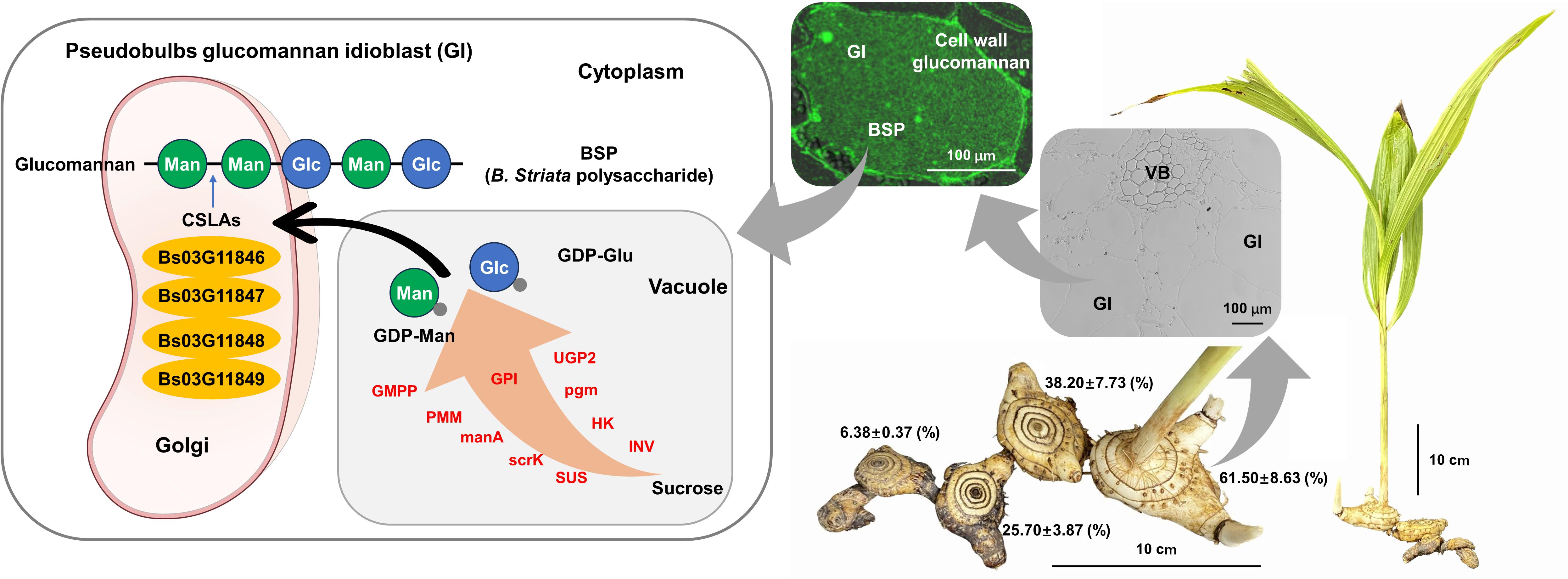Name:HUANG Junfeng
Tell:
Email:huangjunfeng@wbgcas.cn
Organization:Wuhan Botanical Garden
Study Dissects Histochemical Localization and Biosynthesis Molecular Mechanisms of Bletilla striata Polysaccharides
2024-06-20
The dry pseudobulb of the B. striata Rchb. f. (Orchidaceae) plant, spelled BaiJi in Chinese as an important traditional Chinese medicine, has the effects of astringent hemostasis, detumescence, and promoting muscle growth. The soluble, noncellulosic polysaccharide is the key active ingredient of B. striata (BSP) for its hemostatic, antibacterial, antitumor, antifibrotic, wound healing, antioxidant aging, and other medicinal effects. It can also be used as an excellent biopolymer material and pharmaceutical excipient. However, the composition, cytological distribution, and biosynthesis molecular mechanisms of active polysaccharides in Chinese herbs, including BSP, are still poorly understood.
The Medicinal Plant Resources Group of Wuhan Botanical Garden, Chinese Academy of Sciences, analyzed the content, composition, distribution, and biosynthesis of BSP, obtained candidate enzyme genes involved in BSP biosynthesis, and characterized the cellulose synthase-like family A (CSLA) gene family in the glucomannan polymerization of the cell wall and BSP.
Results reveal that BSPs are the water-soluble polysaccharides deposited only in the medicinal tissue pseudobulb, with a mass ratio of approximately mannose:glucose=3:2, and are distributed in cytoplasm other than vacuoles that can be significantly differentiated from glucomannan in cell wall fractions.
There are 12 enzyme families involved in the biosynthetic pathway from sucrose to glucomannan. They identified the BSP-related genes and suggested that the functional differentiation of CSLA subfamily may be the key to the flow of glucomannan to intracellular polysaccharides or cell wall hemicellulose fractions. Four CSLA family members of a gene cluster, Bs03G11846, Bs03G11847, Bs03G11848, and Bs03G11849, can form homo-or heterodimers that affect BSP synthesis in the pseudobulb of B. striata.
The results provide genetic resources and theoretical basis for the creation, development, and utilization of new and excellent germplasm of B. striata.
This study has been published on Horticulture Research entitled “Cytochemical localization and synthesis mechanism of the glucomannan in pseudobulbs ofBletilla striataReichb. f.”. Associate Professor HUANG Junfeng is the first author, Young Prof. LIANG Qiong is the corresponding author. It was supported by the National Natural Science Foundation of China, the Hubei Provincial Natural Science Foundation of China, and the Biological Resources Program, Chinese Academy of Sciences.
